Tecnam airplanes are a series of lightweight aircraft designed for efficiency and performance. Tecnam airplanes incorporate advanced aerodynamics, modern avionics, and durable materials. The design of Tecnam airplanes emphasizes fuel efficiency, passenger comfort, and ease of maintenance. Buyers focus on engine type, seating capacity, range, and certification standards. Explore available models and specifications to make an informed decision. Buy a Tecnam airplane to meet specific aviation needs.
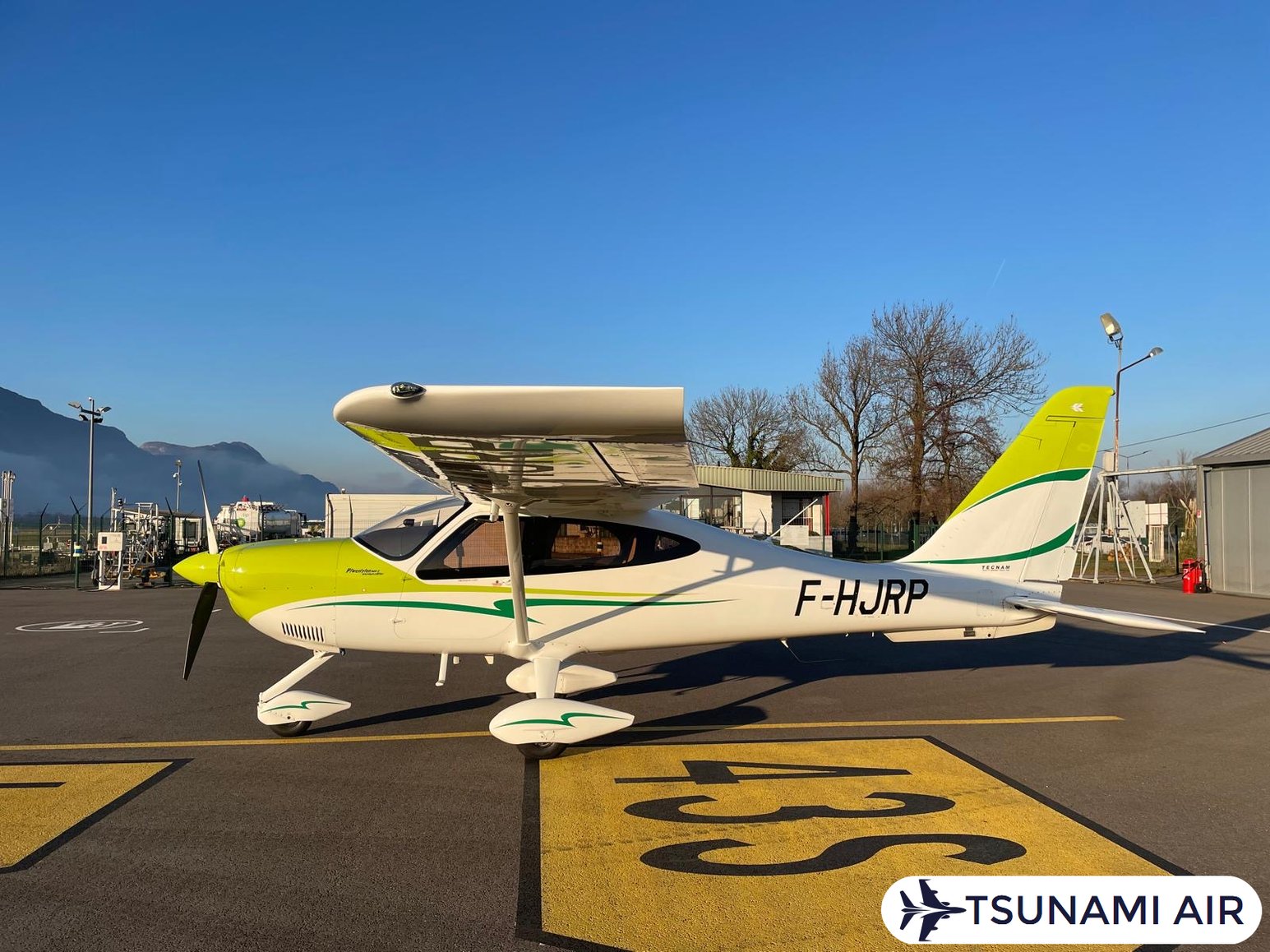
USD $530,000.00
Single EngineReg Number
F-HJRP
Total Time
15 hrs
Location
United Kingdom
Year
2024
Seller: AT Aviation
Phone: +441404642006
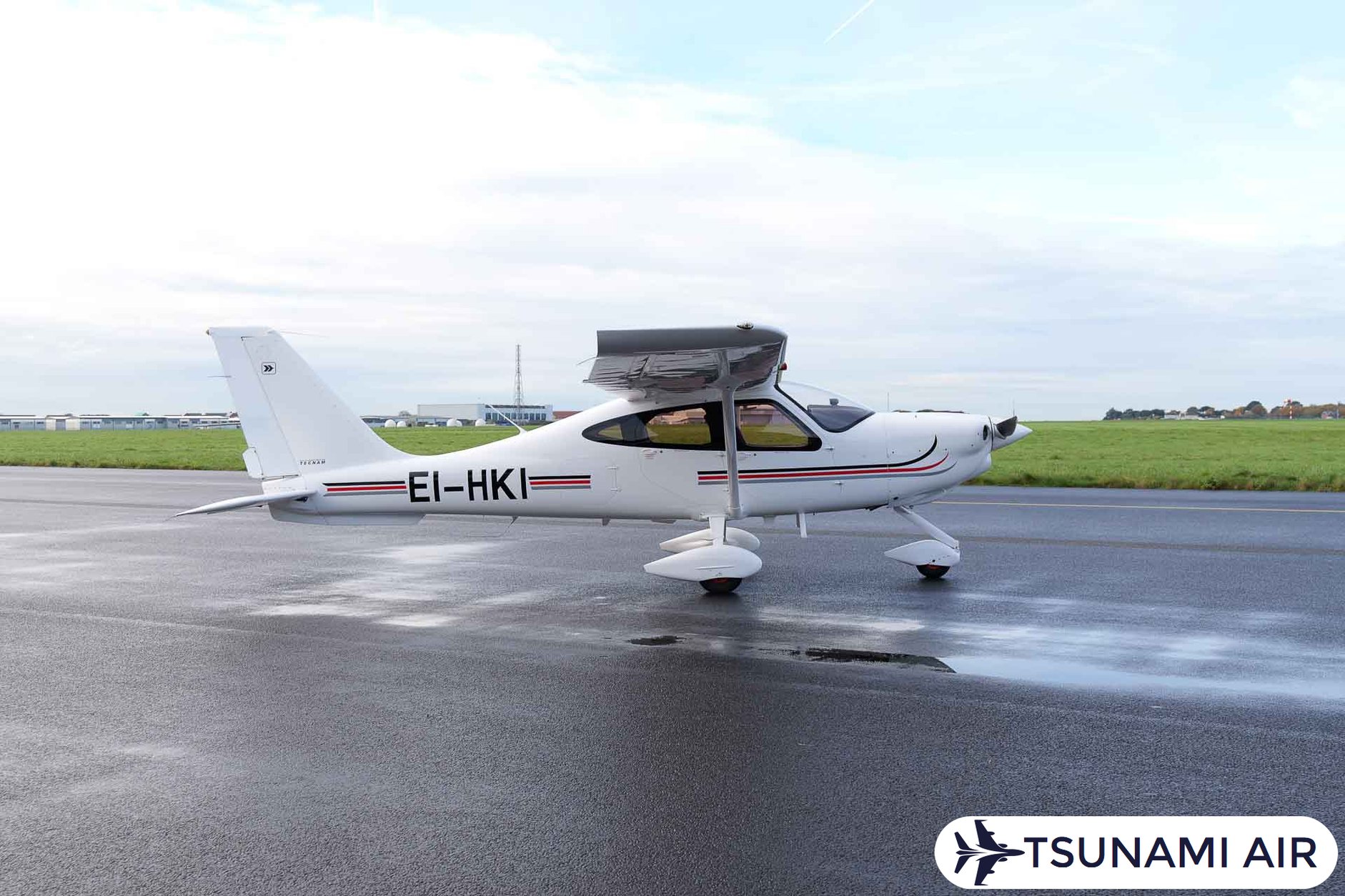
USD $340,000.00
Single EngineReg Number
EI-HKI
Total Time
395 hrs
Location
United Kingdom
Year
2019
Seller: AT Aviation
Phone: +441404642006
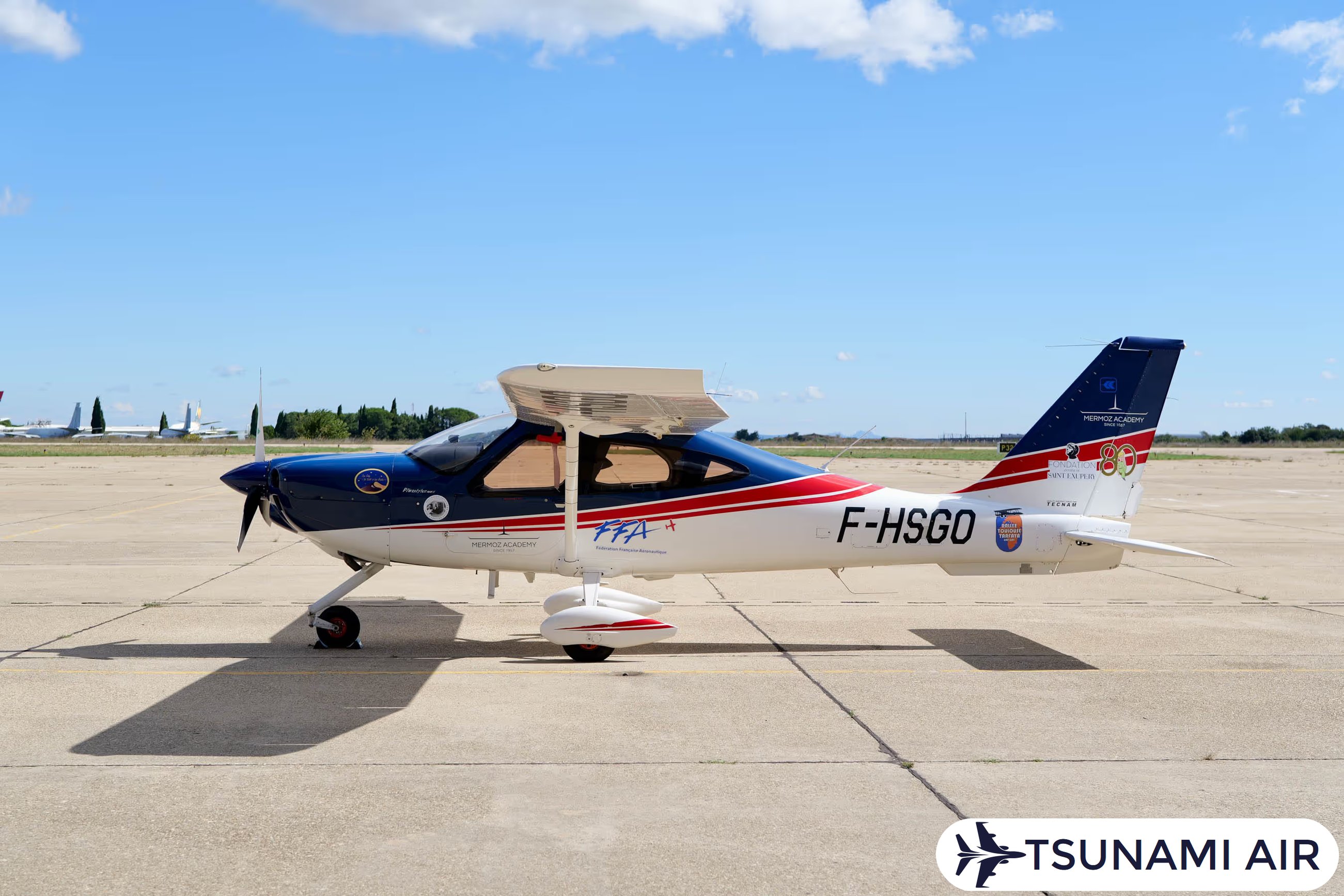
USD $240,000.00
Single EngineReg Number
F-HSGO
Total Time
1793 hrs
Location
United Kingdom
Year
2019
Seller: AT Aviation
Phone: +441404642006
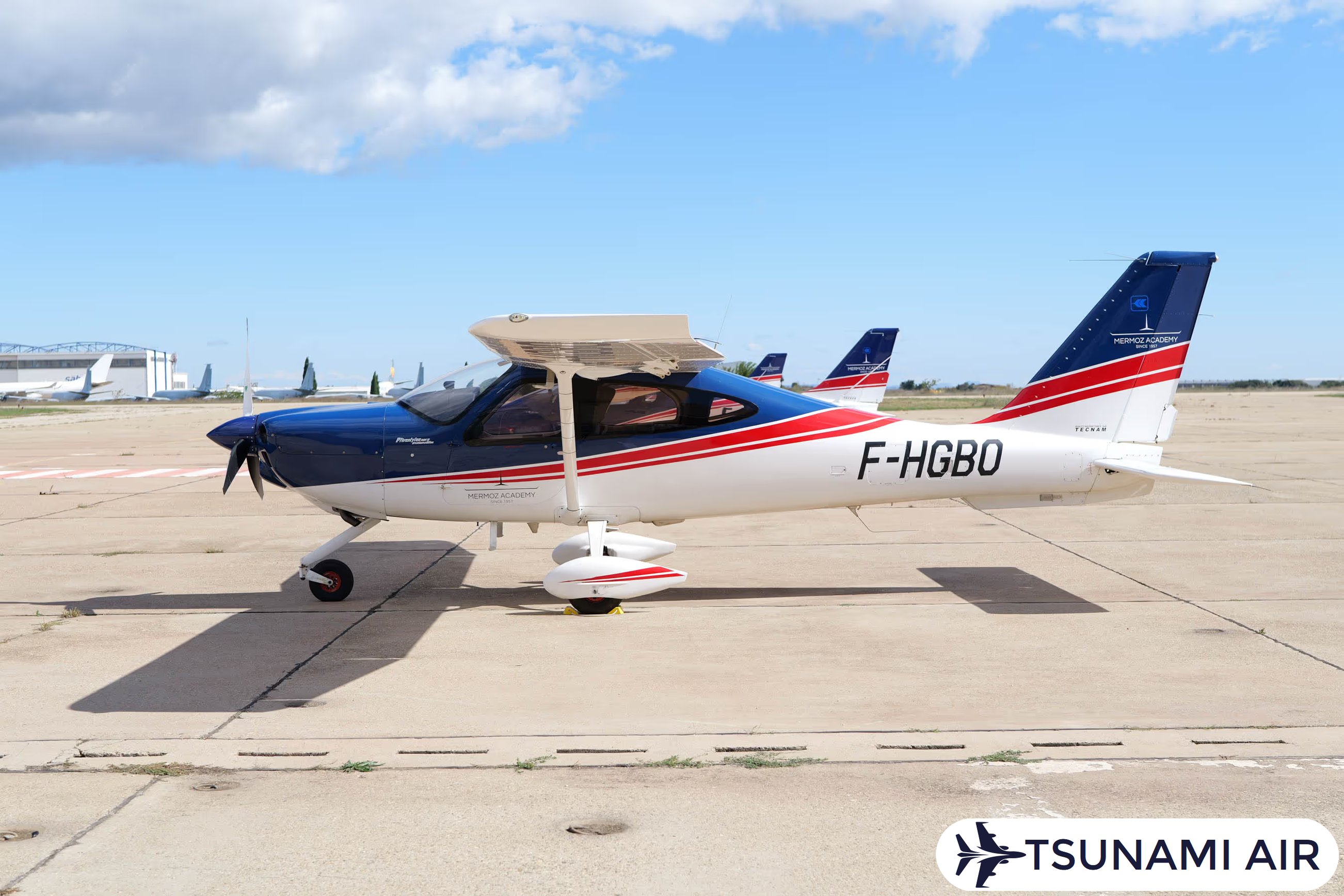
USD $240,000.00
Single EngineReg Number
F-HGBO
Total Time
1845 hrs
Location
United Kingdom
Year
2019
Seller: AT Aviation
Phone: +441404642006

USD $240,000.00
Single EngineReg Number
F-HEDU
Total Time
1875 hrs
Location
United Kingdom
Year
2020
Seller: AT Aviation
Phone: +441404642006
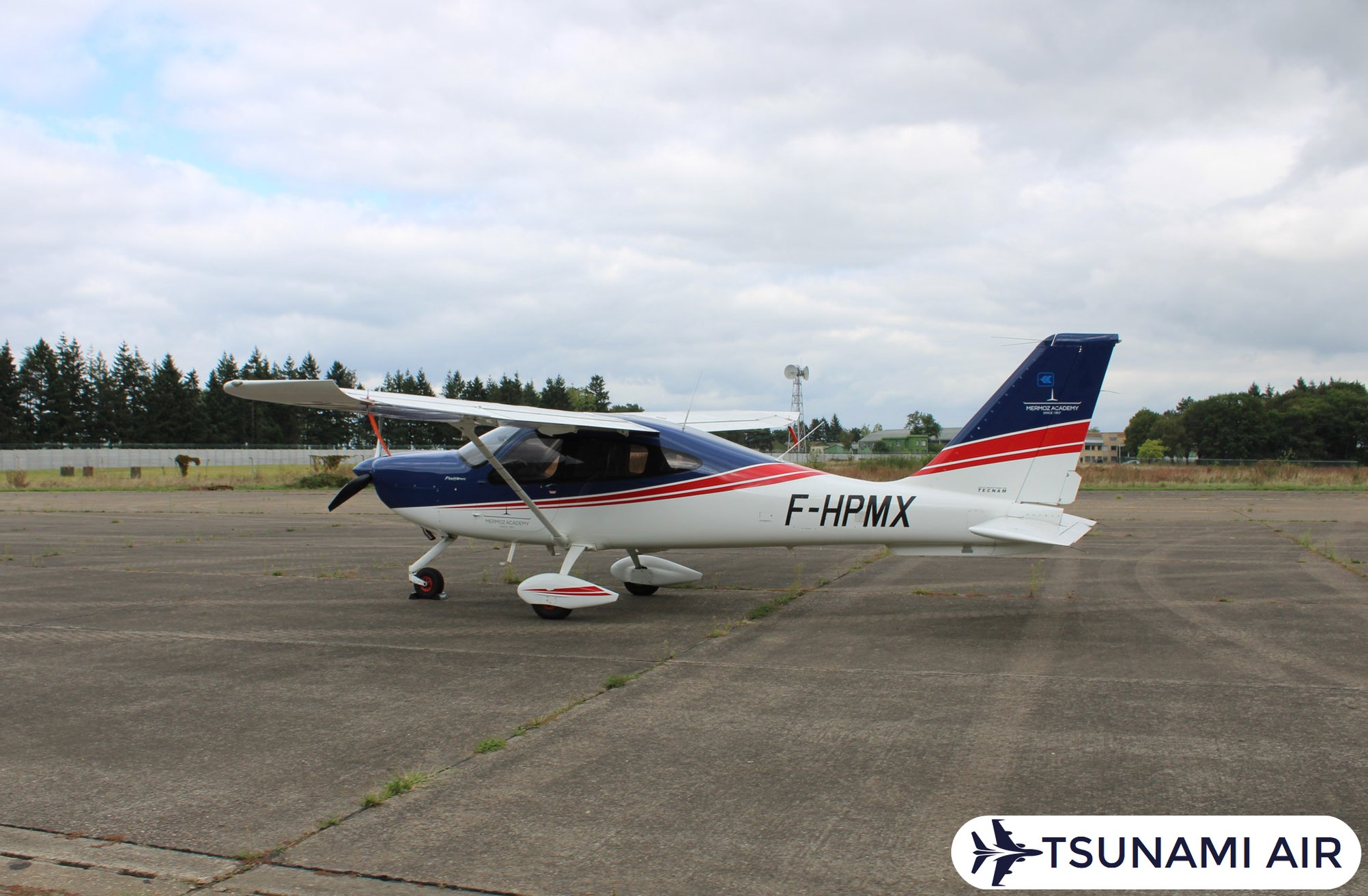
USD $290,000.00
Single EngineReg Number
F-HPMX
Total Time
995 hrs
Location
United Kingdom
Year
2020
Seller: AT Aviation
Phone: +441404642006
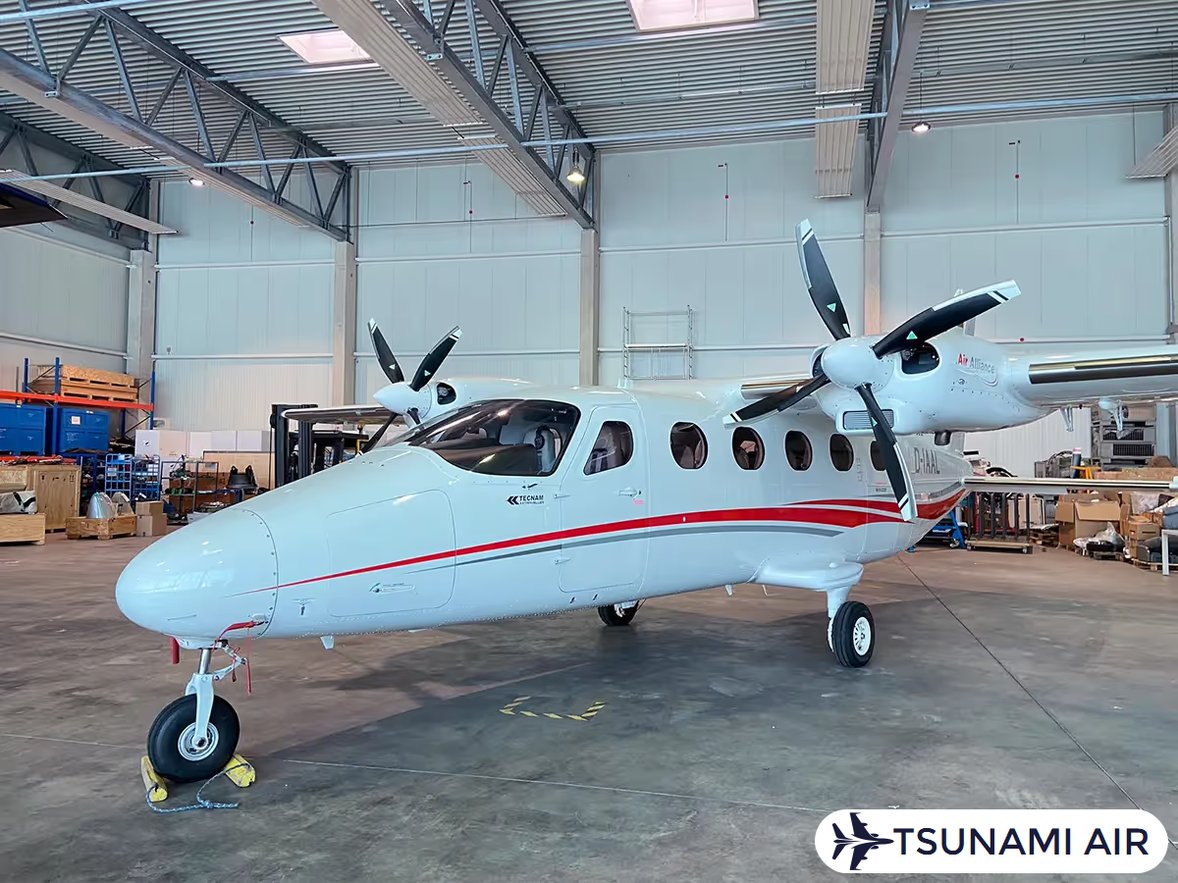
USD $2,450,000
Twin EngineReg Number
D-IAAL
Total Time
102 hrs
Location
United Kingdom
Year
2021
Seller: AT Aviation
Phone: +441404642006
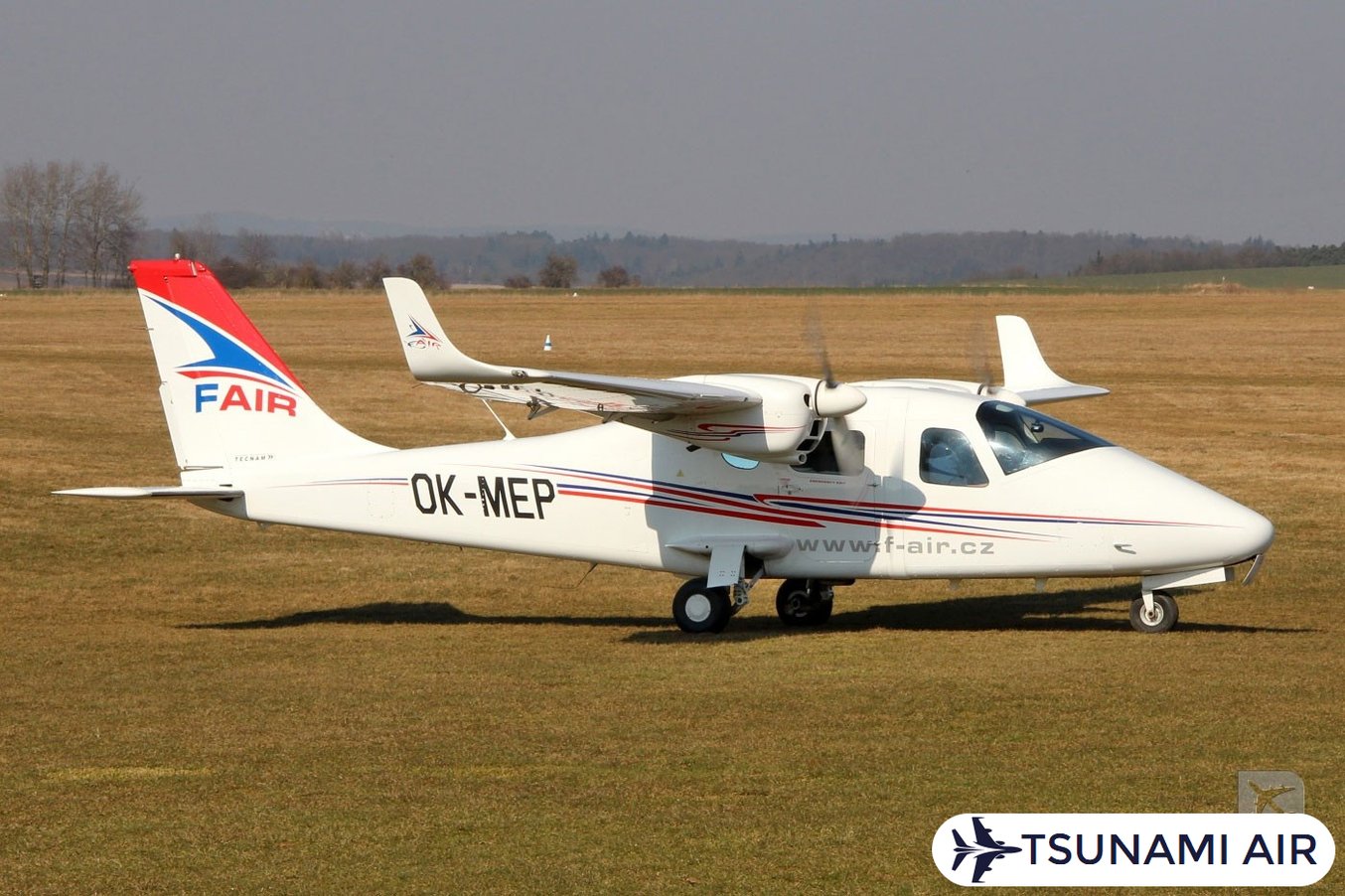
USD $295,000
Single EngineReg Number
OK-MEP
Total Time
5761 hrs
Location
Czech Republic
Year
2010
Seller: Josef Müller
Phone: +420 725 738 071
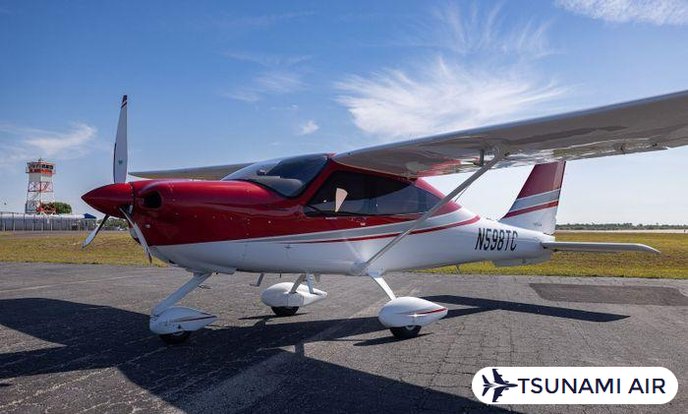
USD $495,000
Single EngineReg Number
N598TC
Total Time
575 hrs
Location
United States
Year
2022
Seller: Lone Mountain Aircraft Sales - Daniel Christman
Phone: (888) 566-3686
Tecnam airplane brand is an Italian aircraft manufacturer founded in 1986. Luigi Pascale and Giovanni Pascale established Tecnam, which designs and manufactures light aircraft for recreation, leisure, training, and commercial applications worldwide. Tecnam operates facilities in Italy, the U.S., and Australia, producing models like P92 Echo and P2012 Traveler.
Tecnam airplane brand carries the Tecnam italian heritage with a foundation built on the Pascale family’s expertise in aerospace engineering. The company started operations in 1986, and its founders gained experience through their earlier work with Partenavia. Tecnam operates production facilities at Naples International Airport and Oreste Salomone Airport in Capua, employing over 250 skilled workers who contribute to aircraft manufacturer production expertise. Tecnam ensures compliance with EASA and FAA certification standards, maintaining high levels of safety and reliability across its fleet. The focus on Tecnam’s innovative design is evident in models like the P92 Echo and P2012 Traveler, which combine lightweight construction with advanced airplane performance characteristics.
Tecnam aircraft stand out in the light aircraft category due to their fuel efficiency and cost-effectiveness. The P92 Echo exemplifies lightweight construction, appealing to general aviation recreational flying enthusiasts. Tecnam offers single-engine and twin-engine options, including the P2006T twin-engine trainer, designed specifically for general aviation pilot training. These airplanes feature modern avionics and retractable undercarriages, boosting airplane design features while optimizing aerodynamics. Rotax engines power many Tecnam models, like the 100-hp Rotax 912S, delivering economical performance ideal for private use and flight schools.
Applications of Tecnam airplanes extend to private ownership, pilot training, and commercial operations. Tecnam plays a vital part in modernizing general aviation by providing reliable aircraft for diverse needs. The P2010 high-wing single-engine model showcases versatility, while the 11-seat P2012 Traveller meets requirements for light transport roles. Tecnam delivers over 7,500 aircraft worldwide as of 2025, serving customers globally through a network of dealers and service centers. Facilities in Italy, the U.S., and Australia provide comprehensive support for training providers and operators. The Tecnam fleet continues to expand, emphasizing sustainability and efficiency in airplane model range.
The types of planes Tecnam manufactures include the P92 Echo MKII, P2002 Sierra MKII, P2006T, P2008 JC, P2010, P2012 Traveller, P2012 STOL, Gran Lusso, and P-Mentor. Each model serves specific markets, with max cruise speeds and engine options like 100 hp or higher, excluding 750 hp engines.
The types of planes that Tecnam manufactures are listed below.
Tecnam manufactures light-sport aircraft compliant with certification standards, guaranteeing light-sport aircraft certification. These models emphasize light-sport aircraft performance and efficiency, featuring two seats and single 100-horsepower Rotax 912S engines. Tecnam designs light-sport aircraft for recreational flying and pilot training, offering high-wing and low-wing variants. Some models include retractable undercarriages for boosted versatility. Training aircraft safety, durability, and maneuverability remain core considerations in Tecnam’s designs. The P2002 Sierra, certified under EASA VLA standards, serves widely in Europe for flight instruction, demonstrating training aircraft durability and handling.
Single-engine aircraft simplicity and fuel efficiency define Tecnam’s approach to propulsion in models like the P92, P2002 Sierra, P2008, and P2010. Tecnam combines safety, durability, and maneuverability in its single-engine aircraft, catering to flight schools and private pilots. Straightforward systems reduce maintenance and operational costs, highlighting single-engine aircraft simplicity. Twin-engine aircraft redundancy and engine reliability characterize models like the P2006T and P2012 Traveller. The P2012 Traveller, powered by two Lycoming TEO-540 engines delivering 375 horsepower each, supports regional transport, corporate use, and special missions. Advanced avionics and optional ice protection systems enhance twin-engine aircraft performance.
Tecnam builds general aviation aircraft emphasizing versatility, range, and utility. General aviation aircraft range extends to 950 nautical miles in the P2012 Traveler, catering to private and commercial needs. Tecnam designs planes for roles beyond training, including special missions and regional transport. Balancing cost, performance, and safety, Tecnam delivers over 7,500 airplanes worldwide across 33 models and variants. The aircraft manufacturer ensures compliance with FAA Light-Sport Aircraft and EASA Very Light Aircraft standards, maintaining a reputation as a leader in aviation aircraft production.
The different Tecnam plane models include the P2006T, P2010, P2012 Traveller, P2008, P92, and P2002. The P2006T is a twin-engine model with engines not exceeding 100 hp each. The P2010 features a max cruise speed of 136 knots and a range of 660 nautical miles. The P2012 Traveller offers a max cruise speed of 185 knots and can carry up to 11 passengers. The P2012 STOL variant includes a higher wingspan for short takeoff and landing capabilities.
The different Tecnam plane models are listed in the table below.
Model | Category | Classification | Engine Options | Key Features |
P92 | Light-Sport Aircraft | Two-Seater | Rotax 912ULS, Rotax 914, Lycoming IO-233 | High-wing, strut-braced, fixed tricycle or conventional gear |
P2002 Sierra | Light-Sport Aircraft | Two-Seater | Rotax power plants | Sport and training applications, excellent handling, superior visibility |
P2006T | Twin-Engine Aircraft | Turboprop Aircraft | Twin-engine configuration | Training and light commercial purposes, operational efficiency |
P2008 | General Aviation Aircraft | Light Aircraft | 100hp engine configuration | Sleek low-wing design, advanced composite materials |
P2010 | Four-Seat Aircraft | Light Utility Aircraft | 170hp diesel, 180hp, 215hp | Spacious cabin, efficient performance for small groups |
P2012 Traveller | Commuter Aircraft | Passenger Transport | Twin-engine configuration | High-wing, accommodates up to 11 passengers, regional flights |
P-Mentor | Trainer Aircraft | Flight Training | Not specified | Designed specifically for flight training programs |
The Tecnam P92 light-sport aircraft serves as a two-seater model designed for flight training and recreational use. This aircraft features a high-wing, strut-braced monoplane configuration with side-by-side seating for the pilot and passenger. The Tecnam P2002 Sierra light-sport aircraft functions as a two-seater option, targeting sport and training applications. Equipped with Rotax power plants, the P2002 Sierra ensures excellent handling characteristics and superior visibility for pilots.
The Tecnam P2006T twin-engine aircraft supports both training and light commercial operations. Its turboprop variant expands capabilities while maintaining operational efficiency under demanding conditions. The Tecnam P2008 general aviation aircraft operates as a versatile light aircraft featuring a sleek, low-wing design constructed from advanced composite materials. With a 100hp engine configuration, the P2008 suits both training and personal aviation needs.
The Tecnam P2010 four-seat aircraft incorporates a spacious cabin design suitable for light utility and personal transport missions. Featuring multiple engine options, including 170hp diesel, 180hp, and 215hp configurations, the P2010 achieves efficient performance for small groups. The maximum cruise speed reaches 136 knots, with a range of 660 nautical miles, allowing extended utility missions effectively.
The Tecnam P2012 Traveller commuter aircraft focuses on passenger transport with a twin-engine, high-wing configuration, accommodating up to 11 passengers. Designed for regional commuter flights, the P2012 Traveller serves small-scale commercial operations efficiently. The STOL variant includes an increased wingspan, boosting short takeoff and landing capabilities for operations in confined spaces.
Yes, Tecnam aircraft are fuel-efficient. Fuel efficiency reduces operating costs and environmental impact. Lightweight design and efficient engine choices like diesel or Rotax engines contribute to their performance. Models like the P2010 TDI consume 5.2 gallons (19.7 liters) per hour.
Fuel efficiency in Tecnam aircraft refers to both fuel consumption per hour and distance covered, allowing reduced operating costs and minimized environmental impact. Tecnam models like the P2006T achieve fuel economy of 17.8 nautical miles per gallon (32.9 kilometers per liter) using twin Rotax engines, consuming about 8 gallons per hour total (30.3 liters per hour total). The P2010 TDI consumes as low as 4.5 gallons per hour (17 liters per hour) at 55% power with a turbocharged diesel engine, demonstrating superior Tecnam p2006t fuel consumption and fuel efficiency.
Tecnam aircraft outperform many industry benchmarks, including other light aircraft and models with similar engines. The P2006T burns 2-3 times less fuel than competitors due to its efficient Rotax engines, underscoring Tecnam p2006T engine performance. The P2010 TDI operates on diesel/Jet A fuel, refining fuel economy and addressing aviation fuel fuel quality concerns. Aviation experts and pilots consistently evaluate Tecnam’s fuel efficiency through technical reviews and operational data, reinforcing claims of class-leading fuel economy across the Tecnam aircraft range.
Factors like load, altitude, weather, and flight duration directly affect aircraft fuel consumption. The P2006T achieves ranges exceeding 600 nautical miles on a full tank depending on payload and cruising conditions. The P2012 Traveller excels in tasks requiring extended missions, reflecting Tecnam p2012 traveller operational efficiency. High-quality aviation fuel with optimal energy density supports lower operating costs, assuring sustained performance in varying scenarios.
The average lifespan of a Tecnam aircraft is 25 to 30 years under normal conditions, influenced by maintenance, usage, and specific models. Tecnam aircraft models like the P92 and P2006T exhibit airframe life limits of up to 140,000 hours, allowing extended durability. Proper maintenance extends the service life, with well-maintained aircraft achieving a minimum lifespan of 20 years. Regular overhauls and upgrades further increase the maximum operational lifespan to 35 years or more. Heavily used training aircraft last around 15 years, while lightly used private planes remain operational for over 40 years. The global P92 fleet accumulates over 200,000 flight hours, demonstrating Tecnam's reliability under consistent use.
Maintenance, usage patterns, and model-specific durability directly determine the operational lifespan of Tecnam aircraft. Regular overhauls and upgrades extend the maximum lifespan to 35 years or more, allowing sustained performance. Airframe life limits for models like the P2006T reach 140,000 hours, while the P92 fleet collectively achieves over 200,000 flight hours, reflecting reliability under consistent use. Lifespan variations occur based on usage type, with heavily used training aircraft lasting 15 years and lightly used private planes remaining operational for 40 years or more. Well-maintained aircraft achieve a minimum service life of 20 years, demonstrating the impact of proper upkeep.
Tecnam’s 65 years of manufacturing experience underpin their reputation for producing durable and efficient aircraft. The global P92 fleet exceeds 2,500 planes, accumulating over 200,000 flight hours, which highlights consistent performance under varying conditions. Airframe life limits, like the 140,000 hours specified for the P2006T model, guarantee extended durability. Owners report positive experiences with handling and build quality, reinforcing Tecnam’s standing in the general aviation industry. The average small aircraft lifespan ranges from 25 to 30 years, influenced by maintenance quality, flight hours, and operational conditions.
Tecnam planes can handle challenging weather conditions through advanced systems like deicing and weather radar, though their capabilities depend on specific conditions like icing, wind turbulence, and rain intensity. Tecnam planes incorporate advanced systems like optional ballistic parachutes and system redundancy to enhance safety. The P2012 STOL achieves EASA certification for steep approaches up to a 10° gradient, demonstrating robust structural integrity. Pilots rely on Garmin G3X avionics and the Aircraft Flight Control System (AFCS) for refined responsiveness in wind turbulence and heavy rain. Certification standards like FAA Part 23 and EASA CS-23 guarantee compliance with rigorous safety and performance benchmarks. Stress testing validates reliability under simulated adverse weather conditions, guaranteeing operational readiness.
Tecnam aircraft are worth buying depending on flying needs, budget, and preferences. Pilots value safety, luxury features, and modern avionics in Tecnam planes. Durable materials and robust design enhance traveling safety. Lower cost of ownership compared to some LSAs makes Tecnam a great choice for value-seeking pilots wanting a reliable machine.
Private pilots, flight schools, and commercial operators form the primary buyer profile for Tecnam aircraft. Flight schools value the Tecnam P92 Echo MKII for its maneuverability and economy, achieving a maximum range of 430 nautical miles with seating for two. Commercial operators favor the Tecnam P2012 Traveller for its capacity of up to 11 passengers and modern design suited for regional operations. Value-seeking buyers prioritize affordability and operational cost efficiency while luxury-focused buyers emphasize advanced avionics and comfort features.
Affordability in Tecnam aircraft extends beyond the purchase price to include operating costs and maintenance requirements. The Tecnam P2006T NG achieves fuel consumption as low as 14 liters (3.69 gallons) per hour per engine and operates on both unleaded avgas and mogas. Maintenance remains straightforward due to widespread parts availability and robust support. Resale value benefits from Tecnam’s global reputation and dealer network, allowing long-term savings compared to competitors in the light sport aircraft category.
Performance comparisons highlight Tecnam models like the P2012 Traveller and P2006T NG against similar aircraft from other manufacturers. The P2012 Traveller delivers a range of 950 nautical miles with advanced avionics and ergonomic seating. Modern materials and robust design contribute to durability and safety compliance with EASA and FAA regulations. The P2006T NG increases the maximum take-off weight to 1,290 kg (2,844 lbs), boosting payload capabilities and operational versatility.
Intended use cases influence whether Tecnam aircraft meet buyer expectations for recreational flying, pilot training, or small-scale commercial operations. The Tecnam P92 suits flight training environments due to excellent maneuverability and economical operation, making it a top choice for aviation academies. The P2006T serves multiple roles including trainer, utility, and survey aircraft with a cruise speed of around 145 knots. Commercial operators adopt the P2012 Traveller for short-haul flights, emphasizing fuel efficiency and passenger comfort.
The ideal buyer for a Tecnam plane includes flight schools, recreational pilots, and small airlines seeking affordability, modern features, and low operating costs. Flight schools benefit from Tecnam's durable construction, low maintenance costs, and advanced avionics customized for training. Recreational pilots appreciate the P2008 and P2010 models for their affordability, efficient fuel consumption, and modern features. Small airlines and charter operators favor the twin-engine P2012 Traveller for its lower operating costs and capacity to carry up to 11 passengers. Aviation enthusiasts value Tecnam's blend of innovation, heritage, and performance in light sport aircraft. Business owners and corporate flight departments rely on Tecnam planes for cost efficiency, safety, and positive impressions during operations.
The ideal buyer for a Tecnam plane is defined by specific aviation requirements rather than solely by financial capacity. Individual owners seeking private pilot affordability and ease of use favor single-engine models like the P2008 and P2010, which offer efficient fuel consumption and low maintenance costs. Flight schools value Tecnam planes for flight school durability, safety, and cost efficiency, with models like the P-Mentor meeting IFR training standards while reducing operational expenses. Corporate buyers prioritize business owner operational efficiency and corporate impression, opting for twin-engine aircraft like the P2012 Traveller, which accommodates up to 11 passengers and delivers reliable performance for business travel or VIP transport.
Novice pilots benefit from the straightforward handling and advanced avionics incorporated into light sport aircraft like the P92 and P2002 Sierra. Seasoned aviators appreciate the balance of speed, efficiency, and comfort in models like the P2010, which provides robust capabilities for recreational flying. Training institutions rely on Tecnam planes for their aviation enthusiast innovation and heritage, providing students with exposure to modern technology while maintaining safety. Air taxi operators and charter services focus on air taxi operator passenger capacity and operating cost efficiency, selecting the P2012 Traveller for its versatility in short-haul operations.
Acquisition costs for Tecnam aircraft range from affordable options like the P2002 Sierra to higher-end models like the P2012 Traveller, offering flexibility across budgets. Maintenance expenses remain manageable due to Tecnam’s emphasis on durable construction and simplified design, appealing to aircraft rental companies requiring reliability and cost control. Commercial operators achieve a clear return on investment through fuel-efficient engines and reduced operating costs, with the P2012 Traveller’s ability to serve multiple roles, including cargo transport and passenger flights.
Light sport aircraft like the Astore comply with stringent standards, making them accessible to sport pilots holding a sport pilot license. Flight schools adhere to regulations governing training institution safety and durability, assuring compliance with IFR and VFR training protocols. Corporate flight departments emphasize corporate flight department safety and efficiency, aligning with regional aviation authorities’ guidelines for business aviation. The adaptability of Tecnam planes to various certifications enhances their appeal across private, commercial, and institutional sectors.
The price of Tecnam planes depends on the model, age, and condition of the aircraft. New Tecnam aircraft prices range from $155,000 for the P2008 light sport model to over $3 million for the P2012 Traveller. Used Tecnam planes start at $74,000 for older models like the 2003 version. Low-hour aircraft, like those with only 60 total flight hours, are priced around $265,000. Refurbished models, like the 2012 version updated in 2023, reach up to $499,000. The pricing reflects variations in age, condition, and included features.
Entry-level models like the P2008 light sport aircraft start at $155,000, while advanced models like the P2012 Traveller exceed $3 million. The P2010 four-seat single engine ranges from $400,000 to $500,000, and the P2006T twin engine falls between $300,000 and $600,000. Used Tecnam aircraft provide more affordable options, with older models like the 2003 version priced at $74,000. A used Tecnam plane in better condition costs around $147,000, while a newer 2018 model is available for $148,700. Model year impacts pricing, as newer aircraft retain higher value and include updated features.
Low-hour aircraft, like those with only 60 total flight hours, are priced at $265,000 due to their minimal usage and excellent condition. Older models, including the 2003 Tecnam, are available for $74,000 but require higher maintenance costs. Aircraft with mid-range usage and age fall within the $147,000 price point, offering a balance between affordability and reliability. Buyers prioritize low-hour aircraft for their extended operational lifespan and reduced wear.
Refurbished Tecnam models represent a premium option within the used aircraft market. A 2012 Tecnam model refurbished in 2023 reaches $499,000, reflecting the investment in restoration and upgraded features. These models appeal to buyers seeking modernized aircraft without the cost of a new purchase. Refurbished planes combine the benefits of updated systems and proven airframe longevity, making them a competitive choice compared to older used or base-model new aircraft.
Price variations across Tecnam models depend on their classification and included features. Entry-level models like the P2008 target flight schools and training providers, starting at $155,000. Higher-end options like the P2012 Traveller cater to regional airliners, with prices exceeding $3 million. The P92 model ranges from $169,839 to $259,875, depending on its condition and features. Additional customization, advanced avionics, and luxury finishes further influence final pricing. Buyers assess these factors to align their purchase with specific operational needs and budgets.
The typical maintenance costs of Tecnam aircraft are around $700 to $1,000 for annual condition inspections. Annual condition inspections guarantee compliance with airworthiness standards and include checks on the airframe, engine, and avionics. Owners of Tecnam aircraft budget €15 per flight hour for basic maintenance and an additional €15 per hour for engine upkeep, excluding parts. Fuel costs remain economical at $15 per hour, equivalent to automotive gasoline prices, due to the efficiency of Rotax engines. Shared ownership schemes reduce expenses further, with standing charges around £65 per month covering hangarage and insurance. Overall operating costs average $100 per flight hour, incorporating fuel, maintenance, and other variables.
Annual condition inspections for Tecnam aircraft cost between $700 and $1,000, assuring compliance with airworthiness standards. These inspections include detailed evaluations of the airframe, engine, and avionics to maintain safety and performance. Owners allocate €15 per flight hour for basic maintenance and an additional €15 per flight hour for engine upkeep, excluding parts. The Rotax engine's efficiency contributes to low fuel costs, averaging $15 per hour, equivalent to automotive gasoline prices. Shared ownership schemes further reduce expenses, with standing charges around £65 per month covering hangarage and insurance. Overall operating costs for Tecnam aircraft average $100 per flight hour, incorporating fuel, maintenance, and other operational variables.
Tecnam provides support to its customers through comprehensive services including technical assistance, maintenance, and spare parts distribution. Tecnam ensures global service network coverage through partnerships with companies like Southern Cross Aviation. Customers access online portals for service bulletins, technical documentation, and training resources. Spare parts distribution operates efficiently in North America, aiding models like P-Mentor and P2012. Technical support includes troubleshooting, diagnostics, and repair guidance via dedicated email channels. Maintenance services feature scheduled inspections and repairs to guarantee aircraft longevity and airworthiness.
Tecnam provides technical support for operating aircraft, including troubleshooting, diagnostics, and repair. Tecnam operators access online portals for service bulletins, technical documentation, and training resources. After-sales services include maintenance, repairs, and efficient spare parts supply for models like P-Mentor and P2012. Customer service assistance addresses inquiries through dedicated email channels. Pre-sale support offers consultation and detailed product information to potential buyers. Post-sale coverage ensures warranty management, scheduled maintenance, and ongoing troubleshooting to maintain aircraft longevity and airworthiness. Specialized support focuses on reliability and compliance for aircraft owners and operators. Engagement with potential buyers involves clear communication and educational resources. Collaboration with service partners and leasing customers streamlines operations and maintenance processes. Human resources include customer service representatives and technical experts providing responsive assistance. Technical resources provide software updates, manuals, and online tools for self-service and training. Physical infrastructure features global service centers and regional support hubs enabling efficient service delivery. Tecnam ensures support and service through robust spare parts logistics and inventory management. Southern Cross Aviation strengthens Tecnam’s spare parts availability in North America. Operators benefit from timely spare parts distribution vital for maintenance and inspections.
The pros and cons of buying a used Tecnam aircraft are presented in the table below.
Pros | Cons |
Stability, predictability, and ease of flight | Limited availability of used Tecnam models due to newer entry into the U.S. market; average age of used aircraft: 5-10 years depending on model |
Good safety record with proper maintenance | Some models (e.g., P2006T) lack IFR certification, limiting weather capabilities; resale value remains high, reducing cost savings (retention rate: ~80% after 5 years) |
Significant cost savings as opposed to new aircraft | Purchase and operating costs remain high compared to competitors; used prices range from $80,000 (P2008) to $200,000 (P2010), depending on condition and hours |
Proven reliability with comprehensive records | Undisclosed mechanical issues can pose risks without thorough inspection; pre-purchase inspections cost $1,500-$3,000 |
More capable models within budget | Higher operating hours correlate with increased upkeep needs; average annual maintenance: $5,000-$10,000 based on usage |
Sturdy construction and innovative design | Depreciation rate varies by model but averages 5%-7% annually over 20-year economic life |
Low operating costs | Availability of parts may be limited in certain regions despite global manufacturer support |
Efficient performance across models | Market demand influences resale value; appraisal scores vary ±10% around average market value |
Advanced avionics in modern models | Older airframes require detailed evaluation for structural integrity; airframe replacement cost exceeds $50,000 |
Strong resale value retention (~80% at 5 yrs) | Regulatory compliance (airworthiness certificate) must be maintained to ensure legal operation |
Comprehensive manufacturer support globally | Inspection reports reveal potential repairs costing up to $20,000 if major issues are found |
Diverse model options cater to preferences | Operating hour impact: Aircraft with >2,000 hours show depreciation rates up to 10% annually |
Carbon-fiber fuselage enhances durability | Service records and overhaul data review is critical; missing documentation increases risk significantly |
Versatile performance specifications | New Tecnam P2010 costs $125,000 less than comparable Cessna 182; used P2010s start at ~$150,000, offering moderate savings |
High-wing designs improve visibility | Warranty resolution speed depends on service center proximity; delays can occur outside Europe/North America |
Fuel efficiency improves operational economy | Insurance premiums for older aircraft rise by 15%-25% annually as operating hours increase beyond 1,500 hours |
The pros of buying a used Tecnam aircraft include cost savings, proven reliability, and access to efficient performance specifications, while the cons involve limited availability, potential undisclosed mechanical issues, and higher long-term operating costs compared to some competitors. Tecnam aircraft maintain a strong safety record when properly maintained, backed by the brand's reputation for quality construction. Used Tecnam aircraft provide cost savings, with prices 30-50% lower than new models, depending on condition and operating hours. Well-maintained models like the P2008 and P2010 demonstrate proven reliability, backed by comprehensive maintenance records. Lower upfront costs allow buyers to access advanced features like carbon-fiber fuselages and G1000 NXi avionics, which are found in higher-end aircraft. Limited availability of used Tecnam aircraft in the U.S. market requires patience and careful evaluation of airframe condition and service history.
Tecnam aircraft benefit from a strong brand reputation, asusring confidence in their construction and performance. Tecnam manufacturer support provides access to spare parts and service centers globally, maintaining regulatory compliance and operational readiness. The innovative design of Tecnam models incorporates advanced materials like carbon-fiber fuselages and aluminum wings, contributing to efficiency and durability. Pre-owned Tecnam aircraft offer cost savings, with prices 30-50% lower than new models. Well-maintained examples retain modern features like G1000 NXi avionics and efficient performance specifications. Aircraft maintenance history service records, including repair history and overhaul data, verify reliability and inform future costs. A thorough pre-purchase inspection ensures structural integrity and evaluates vitalsystems, forming the basis of informed purchasing decisions.
Tecnam models include variants like the P2008, P2010, and Astore, each offering unique performance specifications and avionics configurations. The P2008 features a high-wing design for excellent visibility and handling, while the P2010 provides a spacious cabin and competitive performance akin to a Cessna 172. Modern Tecnam aircraft integrate advanced avionics like the GFC 700 autopilot system, boosting safety and navigation capabilities. Airworthiness certificate certification status ensures compliance with aviation regulations, reinforcing long-term reliability. Used Tecnam aircraft airframe condition impacts safety and valuation, requiring detailed analysis during evaluations. Operating hours and age influence market value, with higher used Tecnam aircraft operating hours correlating to increased maintenance needs over time.
Issues arise from limited availability of used Tecnam aircraft in the U.S. market, complicating the search for suitable options. Some models, like the P2006T, lack IFR certification, restricting their use in adverse weather conditions. Resale values remain high due to brand reputation, reducing initial savings on used purchases. Aircraft valuation appraisal score methodologies assess fair market price, incorporating factors like condition, age, and demand. Cost analysis includes purchase price, maintenance expenses, fuel efficiency, and insurance premiums, providing a comprehensive view of ownership costs. Undisclosed mechanical issues pose risks without proper vetting, emphasizing the significance of reviewing aircraft maintenance and repair history before finalizing transactions.
Depreciation rates affect aircraft resale value, influenced by maintenance history and market demand. Tecnam aircraft depreciate over time, with older models experiencing faster declines in value. Aircraft depreciation economic life determines remaining usability and potential lifespan, guiding budgeting decisions. Total operating hours directly impact reliability and maintenance requirements, necessitating awareness of long-term expenses tied to used Tecnam aircraft operating hours. Market value depends on condition, age, and demand, summarized in detailed reports from aircraft valuation market value assessments. Thorough inspections guarantee no airframe issues compromise safety or incur costly repairs, focusing on used Tecnam aircraft airframe condition.